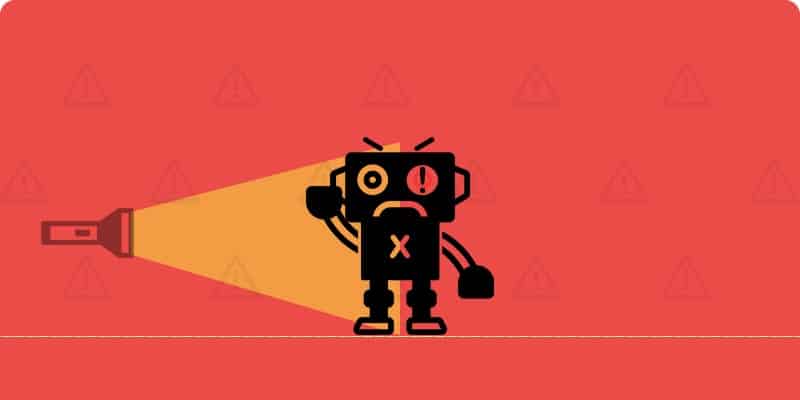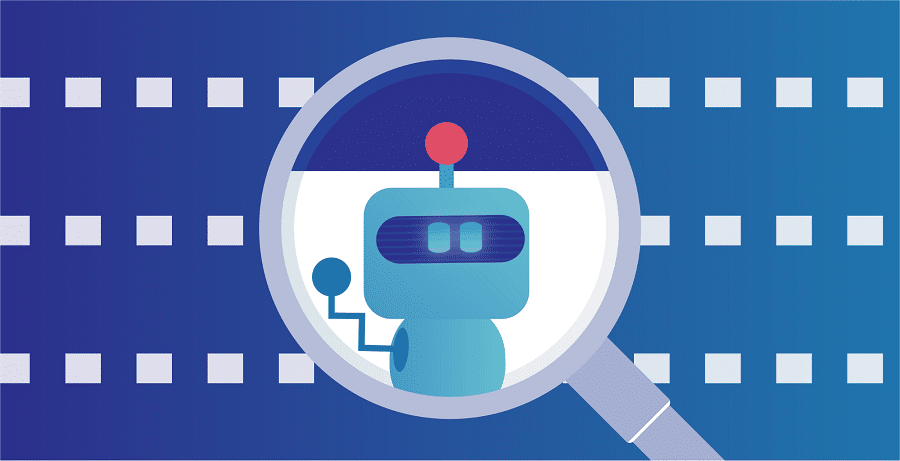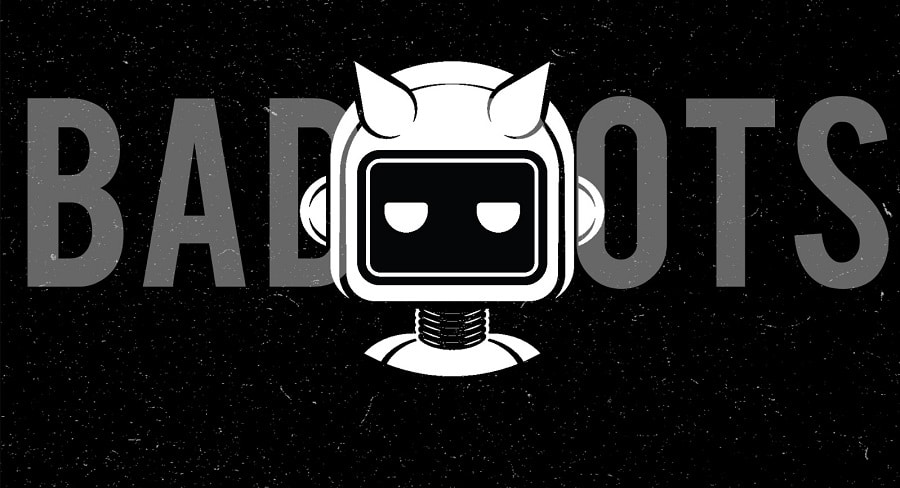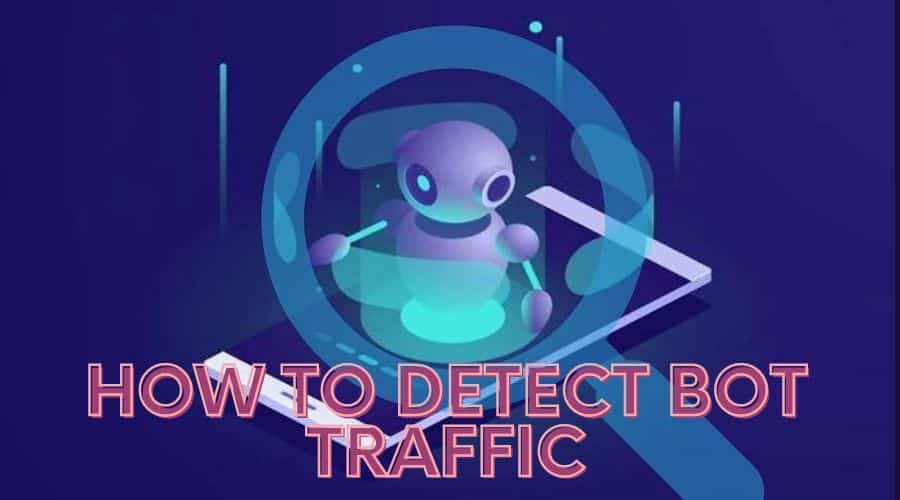Do you own a website and keep getting disturbed by bots? Read the article below to learn how to detect and block bot traffic. Bot traffic, if not contained, can mess up your analytics and even add to your server cost.
Over 40% of Internet traffic comprises bots. And out of that 40%, a good amount goes to malicious bots. Detecting bots can be quite challenging, especially if you don’t understand which bot is good and which is malicious.
This means when you are eventually able to detect a bot, there’s a high chance that it’s a malicious bot. This is why developers are working twice as hard and using methods—such as CAPTCHA farms, artificial intelligence, and instrumentation framework such as Puppeteer—to be ahead of crawlers or bot users.
In this article, we shall be learning how bots can be detrimental to businesses and analytics. In addition, we shall be discussing various other techniques developers use to detect bots and how to mitigate bots using bot detection tools.
What is Bot Traffic?

Bot traffic is the number of non-human traffic a website or app gets. While bot traffic is mostly seen as a negative development, it is not completely so, as there are different kinds of bot traffic.
While some bots are for good purposes, others are built for malicious purposes. Search engine bots, such as Google bots or Baiduspider, or digital assistance bots, such as Alexa and Siri, are good bots and websites welcome such bots.
On the other hand, web scraping bots or DDoS (Distributed Denial of Service) are examples of bots that are designed to cause harm. Besides that, they give website owners a false belief of positive progress; they also disrupt accurate analytics since they click fraud.
Most reputable companies use good bots, and they respect rules created by webmasters to regulate their crawling activities and indexing rate.
These rules are defined in the website’s robot.txt file for bots to see and adhere to. Search engine tools such as Ahrefs and Answer The Public use good bots to crawl millions of websites across the globe.
This is why you can get search results when you search specific keywords on their pages. These bots take up the bandwidth you can’t afford.
The solution is to identify good bots and add them to your allowed list while restricting other kinds of bots. You should be able to do this with a good bot detection tool. Speaking about identifying bots, let’s learn how to detect bot traffic below.
How Can Bot Traffic be Identified?

Web engineers can use bot detection tools to identify bot traffic. Alternatively, you can decipher if requests are bot-generated or not by the volume of requests you get. Normally, a website’s daily traffic is supposed to be within a certain number. If it surprisingly exceeds or falls extremely below this number, then it is most likely bot traffic. Below are some characteristics of bot traffic.
Abnormally High Pageviews
If a website experience a very high increase in the number of page views, there is a high chance that a bot is being used on such websites. Bots’ activities are automated, and most of the time, they attain certain feats in specific amounts of time, which humans can never attain, no matter how fast they click. This usually happens during odd hours, for example, 11 pm.
Abnormally High Bounce Rate
The bounce rate is the rate at which visitors visit a website and leave the website without clicking anything. Normally, this signifies a high rate of dissatisfaction with the content they find on the website. But when this rate of visits leaves a website skyrockets exponentially, then there is every likelihood that bots are being used here.
Unprecedented High or Low Session
The amount of time a visitor spends on a website should be steady. This is one to ascertain that it is humans that are spending this time on a website. In a situation where there is a very high session duration beyond what humans can spend, then it could be a result of the bot slowly scraping or crawling the page at a much slower rate. In the same vein, when there is a low session duration beyond human capabilities, you can be sure that a bot is behind it. In this case, there may be many bots that scrape the page faster and leave when completed.
Junk Conversion
Usually, when there is a new visit to a page and take the desired action, website owners can tell. And when there is a sudden increase in junk and incoherent conversions, then it is certainly a case of a bot. When you get, an increase in details such as gibberish emails or fake names and other nonsense details could be a result of bot filing conversion forms. Junk conversions do not count as conversions because they are not human. It is as good as not having any conversion at all.
High Traffic from Unexpected Locations
When your traffic keeps coming from a particular location in droves, then bots might be responsible. This is especially when you do not expect such traffic and the users or visitors do not speak the native language of the website.
Common Bot Detection Techniques and Limitations

Over time, bots have become more complex to detect with features like human-like behaviour. But web engineers have also beefed up their detection game by using more complex and sophisticated detection tools. Once you can detect bots, you can boldly kick them out to prevent them from attacking your web or app. Also, you will be able to account for your web traffic adequately in your analytics tool. Let’s see the common bot detection techniques below.
txt
The first step in actualizing non-bot traffic, or managing bot traffic, is including sets of rules and instructions known as Robots.txt files. This is a set of instructions that sends a message of dos and don’ts to bots upon getting on a website. It can be programmed to prevent bots from carrying out certain activities on certain pages altogether. However, only good bots will abide by these rules; bad bots may bypass them.
CAPTCHAs
CAPTCHA was introduced in the late 90s to mitigate bots spamming on forums and search engines. But CAPTCHAs can be a pain in the neck for humans because sometimes, the puzzle becomes difficult to solve. In addition, people with sight impairment, dyslexia, or other related challenges will find it difficult to solve CAPTCHAs. This slows down access to a website and sometimes even genuine traffic too.
Besides that, CAPTCHAs are not that difficult for bots to bypass anymore. Many bots now use an API that connects to CAPTCHA farms which can solve captcha problems very fast for almost free. Lastly, bots can now appear as humans that sometimes are not even given CAPTCHAs to solve at all.
WAFs (Web Application Firewalls)
Web Application Firewalls are built to keep attacks such as SQL injections, session hacking, and cross-site scripting off websites or applications. They have a set rule that identifies a bad bot and a good bot. It stands in the way of requests that has the characteristics of an attack.
However, WAFs were very effective back in the day because there were few webs available. And asides from that, malicious bots were not sophisticated and, thus, direct in streaming, making it easier for firewalls to keep them off with minimal effort.
Today, things have evolved. Web now resides in on-premises, cloud, or hybrid environments. Requests can come from anywhere, and with IPs constantly changing, WAFs can’t track which request is malicious and which is not.
Since WAFs are designed to detect familiar requests that carry signs of threat, it is not completely effective in keeping threats out. This is because some bots do not show any signs of threats and, therefore, can bypass firewalls.
MFA (Multi-Factor Authentication)
Multi-Factor authentication is reliable to some extent in preventing your user account from getting hijacked or credential-stuffing attacks. It is an extra layer of security that seeks to give extra protection to account users. However, many users don’t usually bother to activate it because it looks like too much baggage and stress. This behavior helps attack easier. Not to mention that sometimes multi-factor authentication locks real owners completely out of their accounts forever.
Securing your website or app with MFA is good. However, it does not mean that you are susceptible to other attacks, such as DDoS or web crawlers, which can equally cause serious damage.
Bot Detection Challenges

The challenges of detecting bots are now enormous and complex. This is mainly because bots now use certain human qualities, which makes them not difficult to detect. Bots have evolved in their paradigm and are constantly evolving. Unless you deploy advanced techniques, you may not be able to detect a bad boy anymore.
First, back in the days, bots attacked only websites, and basic cybersecurity management could put them in check. But today, bots now attack all endpoints, which include web apps, mobile apps, servers, and APIs. Securing all of these endpoints is important to avoid a loophole for bad bots. Also, bots now behave like humans. They now use a sophisticated browser that has extremely similar fingerprints to humans. For example, bots can resort to mobile phone farms to get real devices rather than simulated ones. They can also be programmed to behave like humans on a website, such as slowing down their activities to match humans’ within a certain time frame.
Furthermore, with very little effort or money, bot operators can deploy bots for an attack across time and space. This means your mobile app or website can be attacked from any country. they can rotate IPs to evade detection and blocks. Each IP does not send more than two requests before it changes to a new IP. The IPs are numerous, running into millions in many cases. This means detection techniques such as WAFs may not be effective in detecting bots.
Last;y, since the emergence of bots as a service (BaaS), it is now easy for anyone to launch a bot attack. This service enables malicious bot operators to set up a botnet and send it to websites. Operators only pay for several successful requests, so the bots are built in advance form. All these factors are what make bot detection challenging.
Does Bot Traffic Adversely Affect Analytics?

Bots create a false impression, which begets false statistics. Website owners can’t account for this traffic because they have no impact on the analytics. Website metrics such as views, bounce rate, season duration, geolocation, and conversion are affected. No thanks to the junk details bot file in the forms or its fast-paced, which gives it away. All of these make it difficult for site owners to measure the progress or performance of their websites. In addition, attempts to improve sites such as A/B testing and conversion rate optimization are greatly affected by false impressions and statistics gotten from bots traffic.
How is Bot Bad for Business?

Bad bots are detrimental to business in several ways. Let’s find out below.
Damages Business Reputation
When bots start to act on behalf of Website owners in a negative light, it portrays the business as unreliable, thereby damaging the business’s reputation. Bots can send spam messages containing malicious links or provocative content to customers. They can also steal users’ credentials or create fake reviews. All these may cost sure owners their customers, as well as dent their reputation.
Skews Analytics
Web owners can’t confidently get statistics from their analytics to work with. This is because whatever impression they get is fake or non-existent in the first place. Fake leads cannot be accounted for, and this hurts analytics badly. Website owners will not be able to track their performance or draw valid conclusions from statistics produced by bots.
Impedes Revenue
Generating fake leads, creating fake accounts, sending Malware links to genuine customers, etc are sure going to make customers withdraw patronage. Consequently, revenue is affected tremendously.
Messes with Advertising ROI
A website that invests in advertising is greatly affected as bots keep consuming pay-per-click advertising with fake and fraudulent clicks. Advertising ROI will dwindle. No thanks to fraud clicks from bots.
Website Speed
When a lot of bots are launched to attack a website. It loads the website server with lots of requests which might be too much for it to handle sometimes. This results in the breakdown of the server, thereby slowing down and frustrating the activities of genuine visitors or customers.
How to Mitigate Bots
There are several ways to manage bot traffic, but we shall be examining two each for both bad and good bots.
Managing a Good Bot

txt
Including a Robots.txt file in a website is one. This is a set of rules stating the dos and don’ts of a website. It also tells visitors what page they are restricted from. The human eye cannot see this file. It is meant for browsers or scraping tools to interact with it as soon as you visit a website. The idea behind posting attention to the Robots.txt file is to allow good bots to gain access and kick bar bots out. Although Robots.txt files are not completely reliable in keeping threats off, malicious bots can still have their way.
Block and Allow List
If you have a bot detection solution, consider setting up a block and allow list. This is to enable you to allow only bots that are beneficial to your website, which in this case, is a good bot. When you do so, you are 100% sure that the bots that visit and roam your website are not malicious and that they help drive genuine traffic. A good bot management solution also allows you to manage traffic from good bots, such as rate limiting and timeboxing. Now, even good bots have to play by your rules.
Managing a Bad Bot

Bad bots are usually the bone of contention in bot traffic and, thus, require extra attention. There are several ways to approach a bad bot, but we shall be narrowing it down to only the top 3.
Bot Management Solutions
Since bots have now become more sophisticated and imitate human behaviour such as normalising click intervals, using an advanced bot solution is your best bet.
These bots are designed to detect even the most sophisticated bots which can forge their User Agent (UA) and rotate between millions of IPs. A lot of these bot management solutions are affordable and easily accessible. So, as a website owner, you need to invest considerably in bot management to keep bad bots off.
CAPTCHAs
CAPTCHAs are good at keeping bad bots at bay but are not completely reliable due to some reasons such as
Leads to Bounce Rate – You too would be frustrated and even leave if you visited a website that won’t stop sending you picture puzzles to solve. In essence, CAPTCHA leads to an increase in bounce rate.
Some Bots can Bypass Bot Management Solutions – Some bots can solve CAPTCHA puzzles with human help. All bad bot operators have to do is get tools from CAPTCHA farm services where humans solve CAPTCHAs for bots.
Yes, CAPTCHAs are effective in keeping threats at arm’s length, to an extent, but sophisticated bots may be too much for it to handle. Therefore, be on the lookout for CAPTCHA services that are not easily penetrated by bots. Finally, know that a captcha is just a prerequisite protection and there’s no one-size-fits-all solution for bot management.
Bots are bad for business no doubt and it is essential to keep them off to protect genuine visitors. But in the course of detecting and blocking bad bots, be careful not to kick good bots out too. You can learn their differences to be about to identify them during detection operation. Opt for good bot management solutions to be able to achieve this.
FAQs
Q. What Does Bot Traffic Look Like?
Bot traffic usually comes in large numbers and many forms. A bad bot, for instance, creates a false impression on the analytics of a website. They look as though they are real human traffic, but no, they are mostly designed to cause harm. One thing that gives them away most time is their gibberish details, such as names or emails on the website form-filling feature. They also appear similar. And the worse thing is that they cannot be accounted for in site metrics such as overall performance.
Q. Are Bot Attacks Easy to Detect?
Ordinarily, bots are not easy to detect. The reason is that they have moved from being basic attack bots to being sophisticated by mimicking human behaviours. Asides from that, they now attack all endpoints, such as mobile apps, APIs, web apps, and servers. So if any endpoint is left unguarded, chances are they will be attacked by bots. However, a good bot management solution will be able to detect them. These good bot management solutions may come at a price, but if you are determined to get rid of bad bots, then you should consider investing in them.
Q. How Can You Tell a Bot from an IP Address?
Bots usually give themselves away by visiting a particular website countless times. If you keep seeing the same IP appear on your logs, then you might be dealing with a bot. To be sure, you should manually check the IP addresses, hostname, and location using a website like IP Avoid. If the IP is included in a blacklist or is not a residential address, then there is a high chance it’s a bot.
Conclusion
There is no doubt saying bad bots are ruining the web on a large scale. If you have a website you never took note of bad bot traffic, then just detecting and blocking this will bring down your site traffic drastically. But this is not a bad thing; that number is your real traffic count as bots only inflate them in a bad way for you.
